I am designing a class D amplifier PCB using the TPA3122D2 amplifier chip. I am planning to base my circuit on the schematic from the evaluation board (see below).
I have tried building this circuit on a breadboard with components of the values given below, but could get no output despite rechecking the circuit several times. I believe this might be because there are requirements beyond the values given in the schematics, specifically for the output inductors and capacitors (e.g. series resistance).
Can anyone advise me on how to select proper components for the output circuit?
